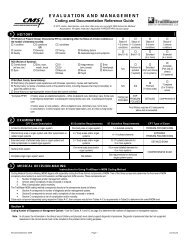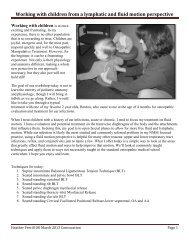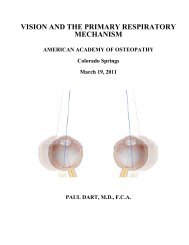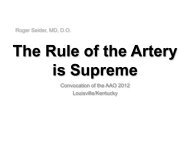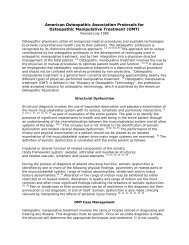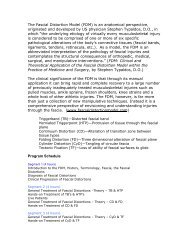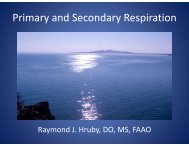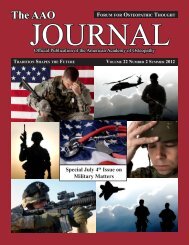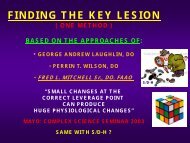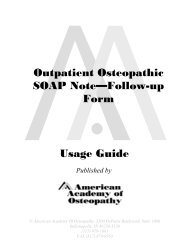Stiles - American Academy of Osteopathy
Stiles - American Academy of Osteopathy
Stiles - American Academy of Osteopathy
Create successful ePaper yourself
Turn your PDF publications into a flip-book with our unique Google optimized e-Paper software.
� Speece and Crow identify four more methods for<br />
identifying the Key Lesion which may have origin in<br />
Sutherland’s work. These include:<br />
� Systematically working one’s way through the myriad <strong>of</strong><br />
somatic dysfunctions until one releases whatever remains.<br />
Obviously this would not work in the case <strong>of</strong> the Still-Laughlin<br />
Technique.<br />
� Observing the patient walking and visually identifying<br />
immobile axes around which the rest <strong>of</strong> the body moves.<br />
� Introducing traction through the leg <strong>of</strong> a supine patient and<br />
palpably identifying the anchoring point(s) in the fascia.<br />
� Observing the patient changing position, such as getting on or<br />
<strong>of</strong>f <strong>of</strong> a table. Areas <strong>of</strong> obvious restriction, such as a tight psoas,<br />
would show themselves in an abnormal transfer.




